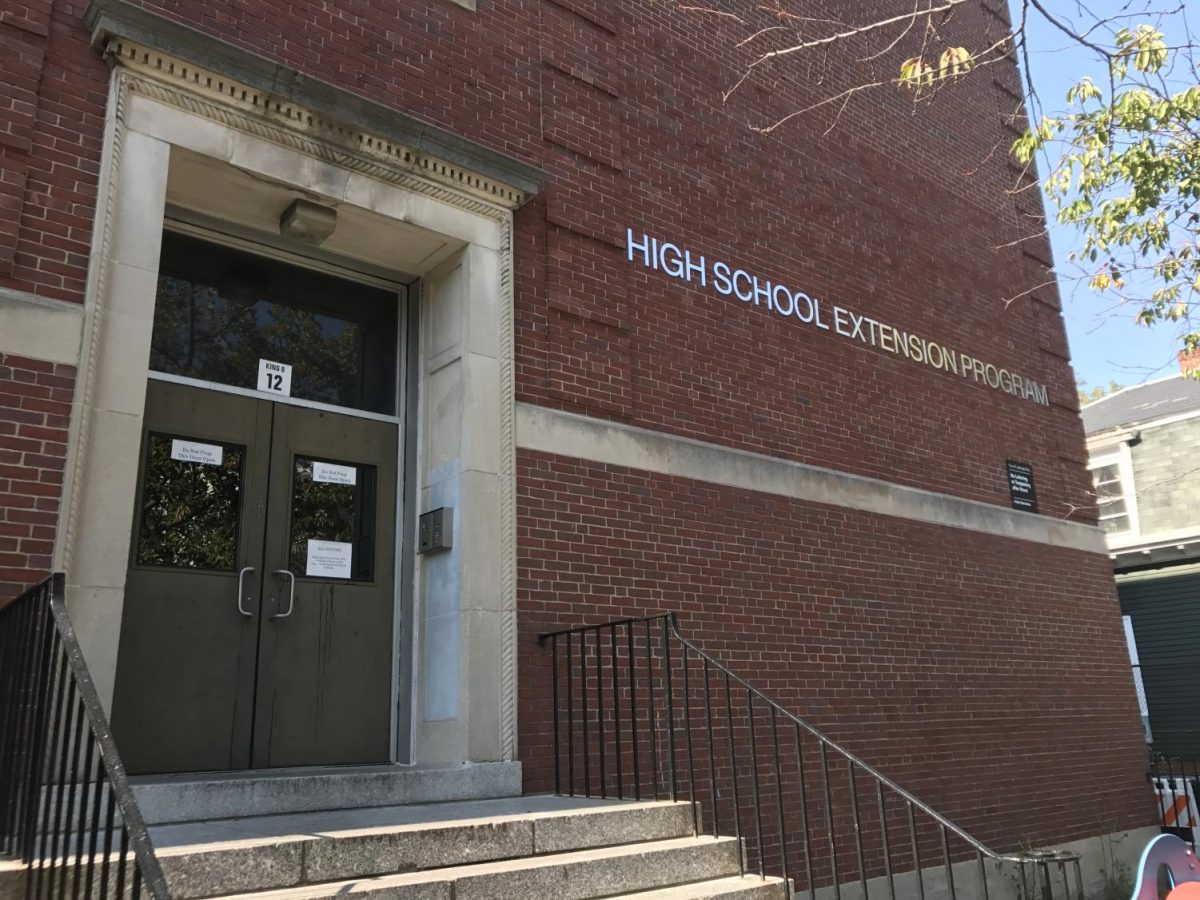In Interview, Principal Discusses Redesign of Extension School
The Extension Program is located at 359 Broadway.
March 3, 2019
As a follow-up to last year’s interview, the RF sat down with Principal Souliotis to discuss the High School Extension Program.
Register Forum: Can you start by giving an update about what has happened at HSEP since we last talked to you in September of last year?
Ryan Souliotis: Sure. So last year, in 2017-2018, we spent the year rewriting our school’s vision, as a vision of a graduate. We decided on five key characteristics that we wanted all students to leave here with in order to be successful post-high school. And those are self-aware, dynamic thinker, future-focused, professionalism, and community member. … We did a lot of work on that. This year, our focus has been on revamping our instructional vision for the school with project-based learning as the focus. Our focus right now has been on that, as well as on marketing and improving the image of the High School Extension Program to the community.
RF: What challenges have you faced more generally and in implementing those new plans?
RS: Our biggest challenge here, with anything overall, is just student attendance. All of our students here come here for a variety of reasons, but attendance seems to be a common concern for all of them. With any design or redesign of what we’re doing, we have to have that in mind—how can we design things that are going to increase student attendance? The other big challenge for us is our instructional vision of moving to a more [project-based learning] classroom. … Getting teachers to teach in a different way than they’ve taught before is challenging, as well as getting students to think differently about how a classroom would function.
RF: What successes have you had in all of those areas?
RS: We’ve had a great deal of success [in] the last year. … I’m really excited about the direction we’re headed in with our project-based learning focus. We’ve been doing some pilot work with that. … The size of our school has grown in the last year, so I think there’s an increased interest in the program. When I first got here there were 28 kids in the program, and right now we have 50 … so I’m really happy with that. At the beginning of the year [we] identified that we needed to do something different around pushing students to come to school, so we did some incentives at the beginning of the year. September we had a raffle for Celtics tickets; if students had perfect attendance in September, their names were entered into that. In October, we did one for Screeemfest tickets at Canobie Lake. And those two months were actually our two best months for attendance for the year, so we’re actually talking about bringing those incentives back.
RF: Now that you’ve been here a little bit longer, what do you think people need to know about HSEP that they may not know?
RS: I think that the reputation in the community is one that’s not accurate about who we are here and who the students are here. The students are here for a wide variety of reasons. I think that there’s this reputation in the community that only students who have failed out of Rindge or who have behavioral issues are the students who go here, and that’s really not the case. Our students here are really bright, they have some pretty big aspirations—our alumni have gone on to some pretty impressive colleges. We are trying to redesign our program so that we meet the needs of any student who is seeking something different than CRLS, and we’re hoping in the next few months that we’re able to share that with the community better through our website as well as some other marketing tools. When I first got here, that’s what this place was—just a smaller version of CRLS—same curriculum, same schedule, really just same attitude towards education at CRLS, and we really worked hard over the past year to reimagine what an alternative school should look like, so you’re starting to see some of those changes like I’ve described with project-based learning [and] rewriting the vision of the school. Next year is going to be a very different place than what students have seen here before. We’re very excited about that.
RF: What will be different?
RS: Next year students in ninth and tenth grade are going to be in grade-level classrooms; they’re going to be taking similar courses to what they take now, but they are going to be with the same cohort of students so we’re able to build a community, [and] they’re able to develop positive relationships with the adult or adults in the room easily because they are going to be around them more often. … And then in eleventh and twelfth grade, it’s going to be more student-directed and it’s going to be project-based. So students will be solving real-world issues. All of the classes will be interdisciplinary, so it’s not just going to be like you go to math class and then you go to history class—everything is going to be integrated into the projects they’re doing.
This piece also appears in our February 2019 print edition.










